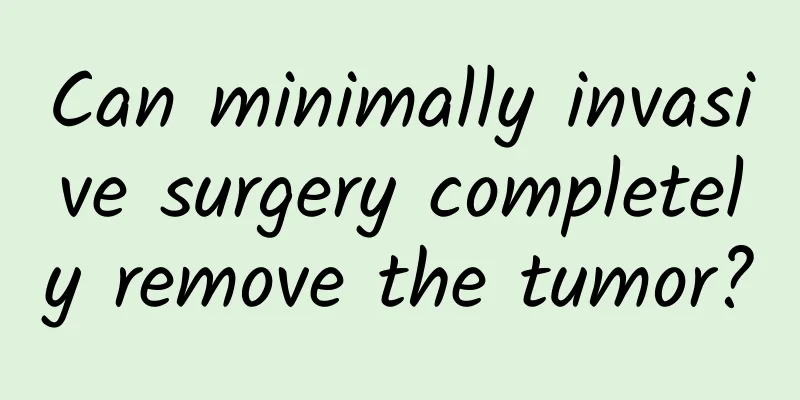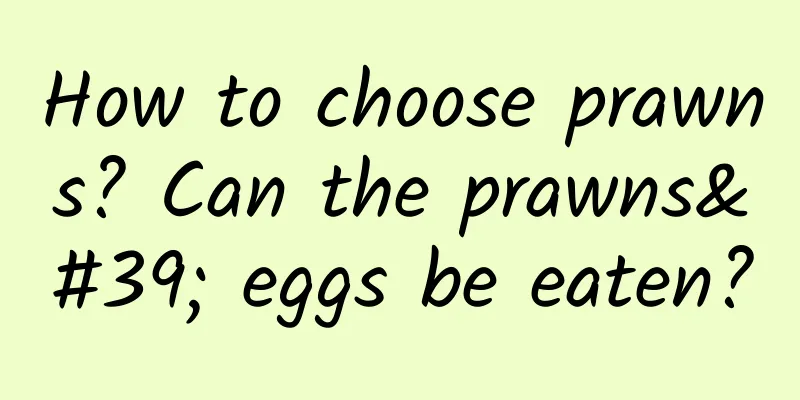"Lao Deng" in the vaccine industry - why hasn't he been eliminated yet?

|
As we all know, the 23-valent pneumococcal polysaccharide vaccine (PPSV23) is often criticized for inducing a weak immune response and failing to produce immune memory. So many friends asked me: How come such an old vaccine has not been eliminated? In fact: because this vaccine is not bad, it is still recommended by the most advanced countries in pneumococcal vaccines until 2025. ▌The eliminated “front wave” vaccineThe pneumococcal vaccine has a longer history than many people realize—more than 100 years. A hundred years ago, two whole-bacteria inactivated pneumococcal vaccines were approved for marketing without proven effectiveness. Not only was the data insufficient, but even the type of bacteria in the vaccine might not have been clear. The trivalent and quadrivalent pneumococcal inactivated vaccines that were already on sale before the South African gold mine incident Since then, gold miners in South Africa have been frequently diagnosed with pneumococcal infection, with 1%-2% of miners becoming absent from work every month and a mortality rate between 25% and 56% - which has directly led to 5% to 10% of miners dying from pneumococcal infection each year. In order to avoid the loss of staff and continue to produce value, the "kind" capitalists invited Almroth Wright, a British doctor who had developed a typhoid vaccine, to conduct pneumococcal vaccine research in the local area. In the end, the doctor lived up to expectations and developed a whole-virus inactivated pneumococcal vaccine. Although this is not the world's first pneumococcal vaccine, it is the first vaccine to be proven effective. And this vaccine distributed as an "employee benefit" has indeed reduced the mortality rate of "cattle and horses". Pneumococcal vaccines that have appeared in the past Since then, with the progress of serological research and the improvement of antigen preparation technology, polysaccharide vaccines (PPSV) with higher valence or prepared from bacterial surface capsular polysaccharides have gradually emerged. ▌The broadest spectrum pneumococcal vaccine is now availableDuring this mixed period of pneumococcal vaccines, the U.S. Bureau of Biologics (BOB) tested multiple pneumococcal vaccines, including 6-valent, 8-valent, 12-valent, 13-valent or 14-valent pneumococcal polysaccharide vaccines. Overview of 26 studies used by BOB to evaluate pneumococcal vaccines These studies have fully demonstrated the safety and effectiveness of pneumococcal polysaccharide vaccine, especially its effectiveness in preventing bacteremia (thanks to many miners who became "volunteers" with the support of the "Minutemen's Association"). However, in 1983, shortly after these studies were compiled and published by the National Technical Information Service (NTIS) of the United States, a product that covered the most types of pneumococci in history - the 23-valent pneumococcal polysaccharide vaccine (PPSV23) - was launched. This vaccine covered the most pneumococcal serotypes at the time. Even today, 42 years after it was approved, no other pneumococcal vaccine in the world covers more serotypes than it. Comparison of serotype coverage of different pneumococcal vaccines approved worldwide This "old Deng" vaccine has been controversial since its launch: some studies have shown high efficacy, some have shown ineffectiveness, and some have shown effectiveness but the effectiveness will gradually decrease over time. In addition, no results of high efficacy have been produced in recent years. Some researchers believe that this is related to factors such as the circulating strains, the impact of similar vaccines, and serotypes not covered by the vaccine. But overall, whether from the perspective of theoretical mechanism or clinical data, more evidence still points to the fact that this vaccine is effective and reliable. ▌Polysaccharide vaccines and conjugate vaccinesAlthough this most "broad-spectrum" pneumococcal vaccine was approved for marketing, it did not hinder the development of more advanced technologies. Since polysaccharide vaccines cannot induce adequate immune responses in infants, who are at high risk of invasive pneumococcal diseases including pneumonia and meningitis, more effective vaccines targeting specific dominant serotypes are needed. The researchers found that the main antigen capsular polysaccharide of the polysaccharide vaccine (polyribosylribitol phosphate/PRP composed of ribose, ribitol and phosphate groups) can be combined with a protein carrier to produce a pneumococcal polysaccharide conjugate vaccine (PCV, hereinafter referred to as "conjugate vaccine"). Effect of PCV7 on invasive pneumococcal disease (IPD) in children younger than 5 years (direct effect; top panel) and adults older than 65 years (group effect; bottom panel). Note the increase in non-PCV7 types, especially type 19A. The antigens prepared by this technology can enable infants to produce an efficient immune response, not only producing high levels of antibodies against various pneumococcal serotypes, but also inducing mucosal immunity and immune memory, and even producing a herd immunity effect. The earliest pneumococcal conjugate vaccine was only 7-valent (PCV7, targeting 7 pneumococcal serotypes), but the impact on non-vaccine-covered types (19A) was found. Since then, 10-valent, 13-valent, 14-valent, 15-valent, 20-valent, and even 21-valent pneumococcal conjugate vaccines have been approved for marketing, covering more and more types. Product information and approval time of some pneumococcal conjugate vaccines Compared with polysaccharide vaccines, pneumococcal conjugate vaccines have many advantages except for the range of pneumococcal serotypes that they prevent. Does this mean that polysaccharide vaccines can be eliminated? ▌The "Old Deng" in the vaccine industryIn 2000, 17 years after the 23-valent polysaccharide vaccine was approved in 1983, the first 7-valent conjugate vaccine was approved. Since then, higher-valent conjugate vaccines have been approved one after another, which has led many people to wonder: Will the 23-valent polysaccharide vaccine be gradually withdrawn from the market? However, "Lao Deng" 23-valent polysaccharide vaccine calmly said: You think too much! After the 7-valent conjugate vaccine was approved and widely used, areas with high vaccination rates found a problem: the types covered by the vaccine did decrease, while the serotypes not covered by the vaccine increased. Even though the conjugate vaccine has been upgraded to 15 valent, there are still some serotypes with a relatively high proportion that are not covered (such as 15B). A. Evolution of serotypes after the implementation of PCV13; B. Emerging non-PCV13 serotypes selected in pneumococcal conjugate vaccines in the past two decades In other words, there are still "gaps" in the coverage of combined vaccines, so the 23-valent polysaccharide vaccine, as the vaccine with the widest coverage, can be used to "urgently fill the gap" - although the gap is not very solid, it is at least much better than nothing. Another thing that needs to be considered is that the current global supply capacity of pneumococcal conjugate vaccines (especially the latest vaccines) is not enough to meet global supply (of course, China's industrialization capabilities may be able to break this situation). Coupled with the high supply costs, this has created demand for 23-valent polysaccharide vaccines - a demand that also comes from the most basic disease prevention and control needs. Implementation of pneumococcal vaccine recommendations for adults aged 19 years and older Therefore, even the United States, which has the world's most advanced pneumococcal conjugate vaccines (15-valent, 20-valent, and 21-valent), still recommends the use of the "forty-year-old" 23-valent polysaccharide vaccine in its latest recommendations released by its Advisory Committee on Immunization Practices (ACIP) in January 2025. In other words, the 7-valent conjugate vaccine has been exhausted, and it is estimated that the 13-valent and 14-valent vaccines have also been exhausted, and the 23-valent polysaccharide vaccine can continue to be active. Unlike the United States, China only has 13-valent conjugate vaccine (approved only for children aged 6 months to 5 years) and 23-valent polysaccharide vaccine (approved for high-risk groups aged ≥ 2 years). However, even so, many friends have subjectively believed that the 23-valent polysaccharide vaccine should be eliminated. Future vaccines and current recommendationsOf course, the good days of "Lao Deng" may not last long, because the latest recommendations show that if you have been vaccinated with a 20-valent conjugate vaccine or a 21-valent conjugate vaccine, it is not recommended (or even necessary) to get a 23-valent polysaccharide vaccine. There are also many higher-priced combined vaccines on the way both at home and abroad, and the highest can even reach 31 valents! ≥20-valent pneumococcal conjugate vaccines that have entered the clinical stage at home and abroad In addition, some scientific research institutions are also trying to use proteins such as pneumococcal surface protein (Psp) as antigens to prepare a "universal pneumococcal vaccine" regardless of serotype. Although it is still early, it is still worth looking forward to. Of course, before the emergence of disruptive products that can completely eliminate the 23-valent polysaccharide vaccine, the "Lao Deng" vaccine can still continue to shine and be used in combination with low-priced (such as 13-valent and 15-valent) combination vaccines for a period of time to deal with disease threats in high-risk groups. Not at the same time, but at intervals Finally, referring to the recommendations released by the US ACIP in 2015 (China’s categories are the same as the US 10 years ago, but the applicable age of the 13-valent vaccine has not been expanded to people over 5 years old), everyone can understand how the 13-valent conjugate vaccine and the 23-valent polysaccharide vaccine should be used at the same time. Recommendations for sequential vaccination of 13-valent and 23-valent vaccines for different populations In short, the 23-valent polysaccharide vaccine is still useful and can continue to shine for a few more years, especially in China. Author: Shao Yinan, member of China Science Writers Association Popular science expert of Beijing Chronic Disease Prevention and Health Education Research Association Operator of China's Top 100 Popular Science Accounts Co-author of the "Talking about Vaccines" series of books Junior title in science communication An ordinary industry person who is not very professional but has answered questions and refuted rumors tens of thousands of times in the past 10 years willing =Pill= Disclaimer: This article was created out of personal interest, only to help more ordinary people have a clearer understanding of vaccines. The content and views do not represent any organization, unit, or institution, and it has not accepted any form of sponsorship. All pictures are from public online platforms. If the content is incorrect, please do more self-criticism (not). |
<<: Beware of "laughing gas": seemingly harmless but dangerous temptation
>>: Digestive tract diseases are more common in spring, experts advise to pay attention to hygiene
Recommend
Ovarian cysts disappear after pregnancy
Ovarian cyst is a form of gynecological inflammat...
How long does it take for the period to be delayed before the pregnancy test is confirmed?
In our daily life, most married couples want a ba...
Pregnant woman in bed with unbearable labor pains
When approaching delivery, pregnant women are pro...
Asian Games are coming soon, take care of your knees, save this "white list" of knee joint exercises
Hangzhou Asian Games is about to be held If you l...
If blood pressure is stable, can the medication be stopped?
Some people often ask, "My blood pressure ha...
Unexplained itching of the skin "rash" - acute urticaria
Unexplained itching of the skin "rash" ...
When is the last pregnancy?
Nowadays, many couples have been unable to concei...
How to relieve burping during pregnancy
Women are prone to various uncomfortable symptoms...
The carotene content of broccoli is 29 times that of broccoli! This vegetable is antioxidant, promotes bowel movements, and controls blood pressure. It would be a pity to miss it.
When it comes to kale, many people only think of ...
Treatments for hair loss in women
Girls often experience hair loss in their daily l...
What to do if your uterus is prolapsed and you have constipation
We all know that the structure of the human body ...
Why does my chest still swell and hurt more than ten days after the abortion?
Abortion is a method of terminating pregnancy tha...
Can I have sex at 28 weeks of pregnancy?
Sexual intercourse is prohibited in the early and...
What should women do if they have inflammation?
Due to the particularity of female reproductive o...
The magical effect of baking soda in gynecology
Baking soda is a common item in our daily life. I...









